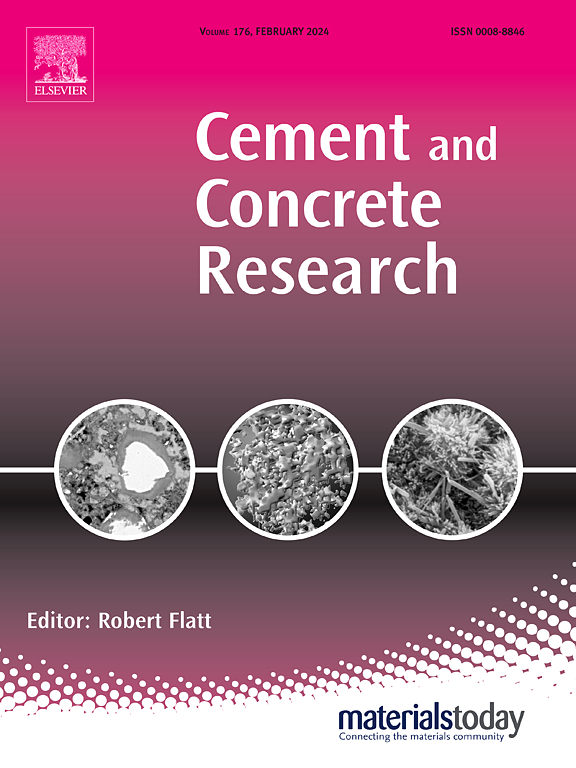Effect of nesquehonite and silica on magnesia-silicate‑carbonate cements
IF 10.9
1区 工程技术
Q1 CONSTRUCTION & BUILDING TECHNOLOGY
引用次数: 0
Abstract
Cements based on hydrated magnesium carbonates are an alternative binder system with high CO2 sequestration ability. The present study examines the effect of silica, a by-product of MgO production from magnesium-silicate rocks, in MgO/nesquehonite binders. A high Mg/Si ratio of 3 was used to allow the formation of both the hydrous carbonate-containing brucite (HCB) phase and the magnesium silicate hydrate (M-S-H) phase. HCB formed within the first day. Its quantity was reduced during the formation of M-S-H and stabilized until the complete reaction of silica. Low quantities of nesquehonite, ≤10 wt%, accelerated M-S-H formation, while ≥16 wt% hindered it. CO2 quantification showed that up to 12 g of CO2 per 100 g dry cement could be sequestered. MgO/silica/nesquehonite mortars with 10 wt% of nesquehonite and a water/cement ratio of 0.65 exhibited overall good mechanical strength, achieving 23 MPa at 2 days and 36 MPa at 182 days.
珍珠岩和二氧化硅对镁-硅酸盐-碳酸盐胶结物的影响
基于水合碳酸镁的水泥是一种具有高二氧化碳封存能力的替代粘结剂系统。本研究探讨了二氧化硅对氧化镁/水合碳酸镁粘结剂的影响,二氧化硅是从镁硅酸盐岩中生产氧化镁的副产品。采用了 3 的高 Mg/Si 比,以便形成含水碳酸盐的青金石相(HCB)和水合硅酸镁相(M-S-H)。HCB 在第一天内形成。其数量在 M-S-H 形成过程中减少,并在二氧化硅完全反应之前保持稳定。低含量(≤10 wt%)的内沸石会加速 M-S-H 的形成,而含量≥16 wt%的内沸石则会阻碍 M-S-H 的形成。二氧化碳定量分析显示,每 100 克干水泥可封存多达 12 克二氧化碳。氧化镁/二氧化硅/沸石砂浆中沸石的含量为 10 wt%,水灰比为 0.65,总体机械强度良好,2 天时达到 23 兆帕,182 天时达到 36 兆帕。
本文章由计算机程序翻译,如有差异,请以英文原文为准。
求助全文
约1分钟内获得全文
求助全文
来源期刊

Cement and Concrete Research
工程技术-材料科学:综合
CiteScore
20.90
自引率
12.30%
发文量
318
审稿时长
53 days
期刊介绍:
Cement and Concrete Research is dedicated to publishing top-notch research on the materials science and engineering of cement, cement composites, mortars, concrete, and related materials incorporating cement or other mineral binders. The journal prioritizes reporting significant findings in research on the properties and performance of cementitious materials. It also covers novel experimental techniques, the latest analytical and modeling methods, examination and diagnosis of actual cement and concrete structures, and the exploration of potential improvements in materials.
 求助内容:
求助内容: 应助结果提醒方式:
应助结果提醒方式:


